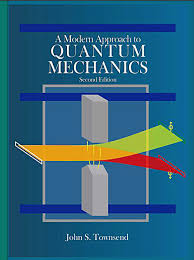
Course grading scheme: Midterm: 30%, final exam: 40%, homeworks (full marks on full submission): 30%
Class timings: 11:00 to 12:15 pm, Monday and Wednesday, Room: 204 SSE Complex.
Course TA: Syed Muhammad Hani, MS student
Course contents and instruments:
- Time-independent perturbation theory (3 lectures): We covered both nondegenerate and degenerate perturbation theory with several examples; also had to exemplify how to construct angular momentum operators though that was not my original intention. Here is homework 1.
Time independent perturbation theory (tutorial)
- The hydrogen atom (3 lectures + 3 lectures for review): These lectures were aimed at deriving the solution to the hydrogen atom, reaching at radial and angular solutions, the latter being the spherical harmonics. We discussed the meaning and form of orbitals and analyzed calculations of probabilities and probability densities. Here is homework 2.
The hydrogen atom (tutorial)
- Orbital angular momentum (2 lectures): We discussed the various components of the orbital angular momentum, their commutation and their role in describing the Hamiltonian of the hydrogen atom. Some specific examples of orbital angular momentum and their applications to spectroscopy were discussed. Download homework 3 from here.
Orbital Angular Momentum (tutorial)
- Addition of angular momentums (3 lectures): We discussed how to add angular momentums, also looked at the singlet/triplet basis and drew comparisons with the Zeeman basis. We also did a systematic derivation of Clebsch-Gordon coefficients using the ladder operators.
- Time-dynamics and nuclear magnetic resonance (3 lectures): In these lectures we looked at the time-dependent Schrodinger equation and placed special emphasis on how a spin-1/2 particle behaves inside a magnetic field. We also investigated, in detail, a nuclear magnetic resonance (NMR) experiment and in the process moved to an interaction picture. Here is homework 4.
Time-dependent Schrodinger equation and Nuclear Magnetic Resonance (tutorial)